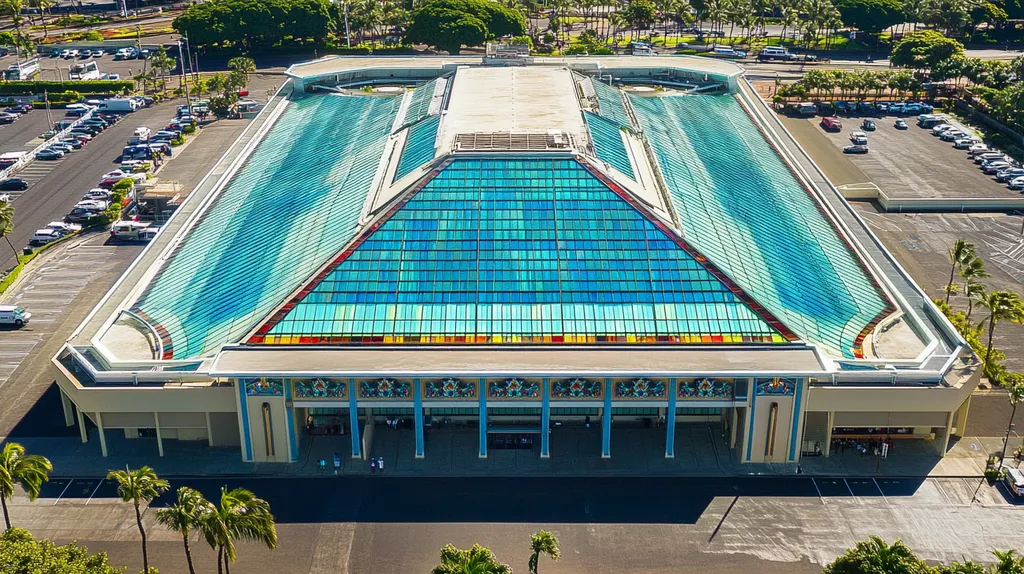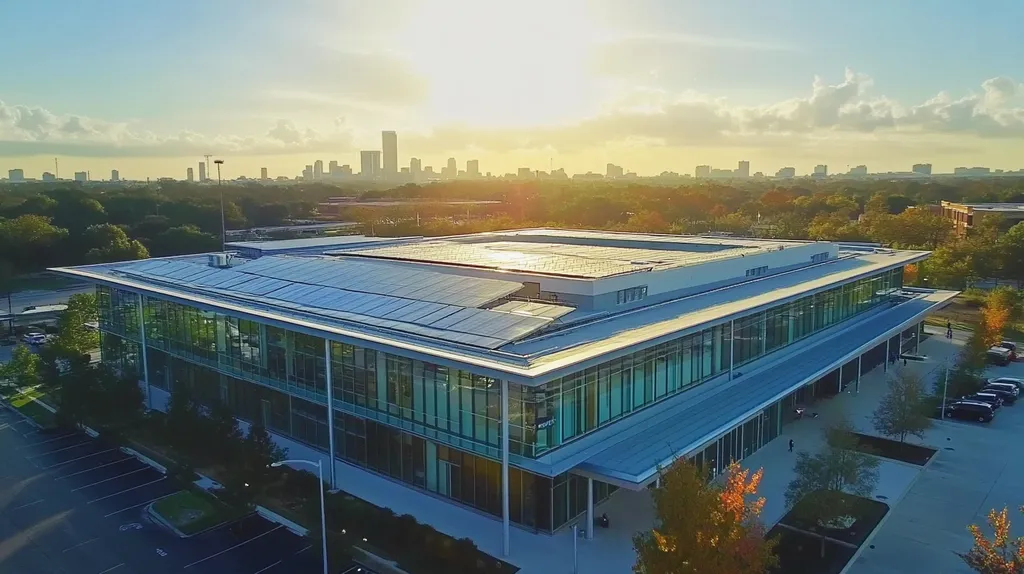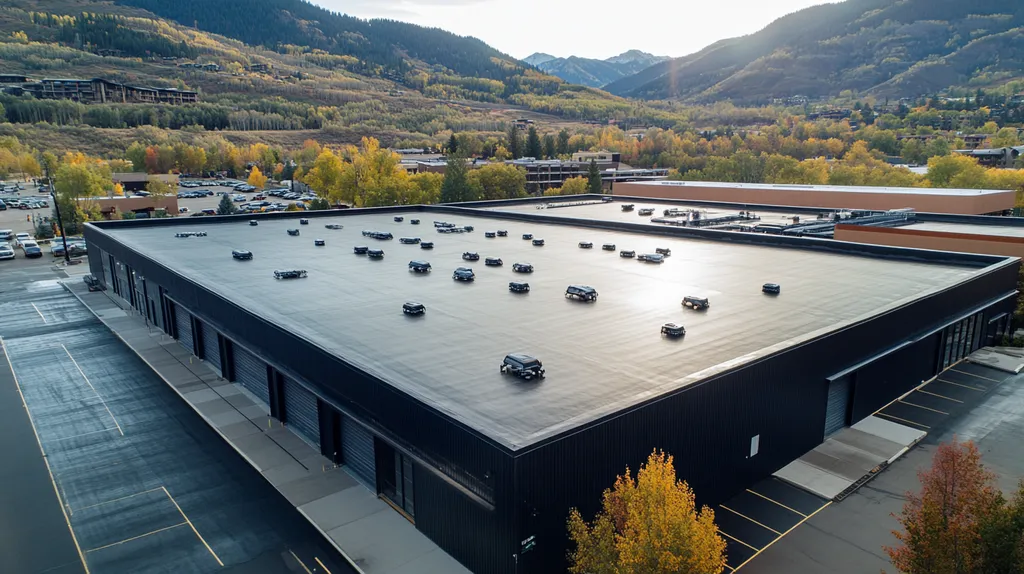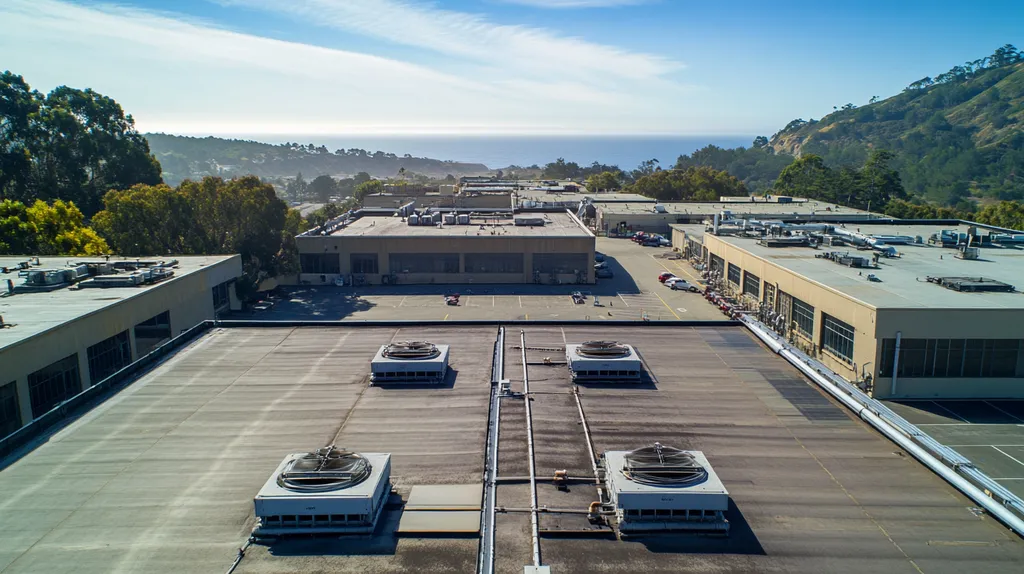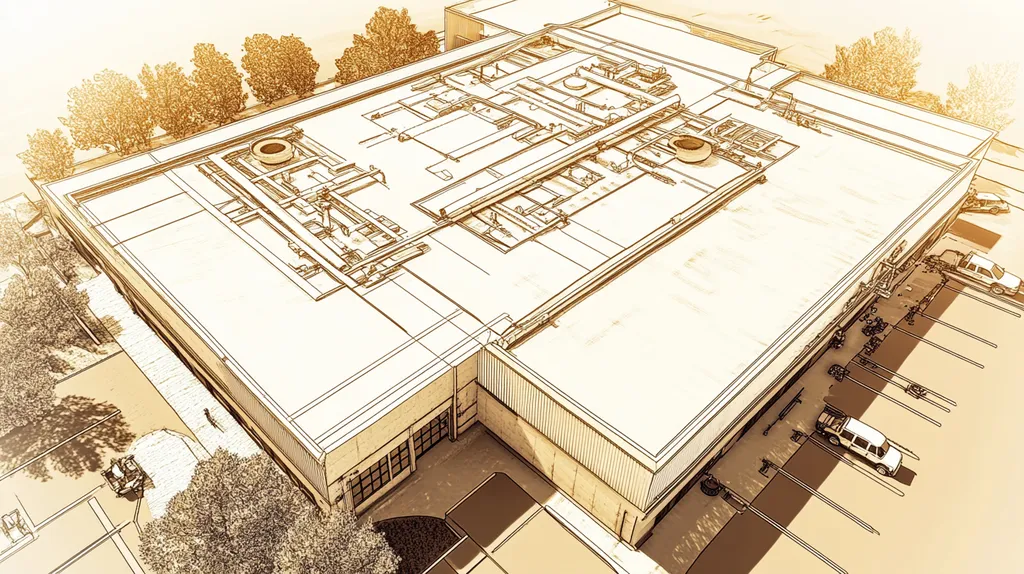Commercial building owners waste over $30 billion annually on preventable energy costs, with inefficient roofing systems accounting for up to 40% of these losses.
Despite technological advances in roofing materials and design, persistent industry myths continue driving decisions that compromise building performance and inflate operating expenses.
This comprehensive analysis exposes common roofing misconceptions while providing evidence-based solutions that deliver measurable energy savings and enhanced building value.
SECTION 1: COMMON MISCONCEPTIONS
Energy costs represent up to 30% of a commercial building’s operating expenses, with roofing choices significantly impacting this figure. Yet persistent myths about commercial roofing continue to drive inefficient decisions, leading to wasted energy and unnecessary expenses. Understanding these misconceptions is essential for property owners seeking to optimize their building’s performance and reduce operating costs.
Metal Roofs Absorb Excessive Heat
The belief that metal roofs create hotter buildings stems from experiences with older, uncoated systems. Modern metal roofing actually offers superior thermal performance through advanced coating technologies and installation methods.
Today’s metal roofs feature specialized finishes that can reflect up to 70% of solar radiation. This reflective capability significantly reduces heat transfer into the building, resulting in decreased cooling demands during summer months.
The structure of metal roofing systems also promotes energy efficiency through integrated air gaps and insulation layers. These design elements create additional thermal barriers that further minimize heat absorption.
When properly specified and installed, metal roofs can reduce cooling costs by 10-25% compared to traditional roofing materials. Their longevity and recyclability make them an increasingly popular choice for energy-conscious building owners.
All Cool Roofs Are Energy Efficient
While cool roofs can deliver significant energy savings, their performance varies widely based on multiple factors. Climate zone, building design, and installation quality all impact actual energy efficiency outcomes.
Cool roof systems require proper maintenance to maintain their reflective properties. Without regular cleaning and upkeep, their energy-saving benefits can decrease substantially over time.
Building configuration and existing insulation levels play crucial roles in determining cool roof effectiveness. A cool roof installed on a poorly insulated structure may not deliver the expected energy savings.
Regional weather patterns significantly influence cool roof performance. In cold climates, excessive heat reflection might increase winter heating costs, potentially offsetting summer cooling savings.
Roof Color Doesn’t Affect Energy Usage
Surface color dramatically influences a roof’s thermal performance. Dark-colored roofs can reach temperatures up to 90°F higher than ambient air temperature, while light-colored surfaces stay much cooler.
This temperature difference directly affects building energy consumption. Dark roofs transfer more heat into the building interior, forcing cooling systems to work harder and consume more energy.
The impact of roof color varies by climate zone and building type. In warm regions, light-colored roofs can reduce peak cooling demands by 10-15% compared to dark surfaces.
Seasonal changes also affect the relationship between roof color and energy usage. While dark roofs may provide passive solar heating benefits in winter, this advantage rarely outweighs summer cooling penalties in most commercial applications.
SECTION 2: PRACTICAL IMPLICATIONS
In today’s commercial real estate landscape, roofing choices directly impact both operational costs and asset value. With energy prices continuing to rise, inefficient roofing systems can drain thousands of dollars annually from building operating budgets. The U.S. Department of Energy estimates that poor roofing choices can increase cooling costs by up to 40% in commercial buildings.
Impact on HVAC Systems Performance
The relationship between roofing systems and HVAC performance creates a critical efficiency nexus. Heat transfer through roofing materials can force cooling systems to work up to 25% harder than necessary, dramatically increasing energy consumption and maintenance requirements.
Properly specified roofing systems can reduce the cooling load on HVAC equipment by 10-15% during peak demand periods. This reduction extends equipment lifespan while lowering monthly utility costs.
Temperature fluctuations caused by inefficient roofing put additional strain on HVAC components. Modern roofing solutions with proper insulation and reflective properties help maintain consistent indoor temperatures.
Strategic roof maintenance programs can preserve HVAC efficiency gains over time. Regular inspections and prompt repairs prevent degradation of thermal properties that would otherwise increase system loads.
Urban Heat Islands and Building Comfort
Commercial buildings significantly contribute to urban heat island effects, with dark roofing surfaces absorbing up to 95% of solar radiation. This absorbed heat raises local temperatures and creates a cascade of increased cooling demands across entire districts.
Reflective roofing materials can reduce surface temperatures by 50-60°F compared to traditional dark surfaces. This dramatic difference impacts both individual building performance and neighborhood-wide energy consumption patterns.
Building orientation and roof design must work together to optimize thermal performance. Strategic use of cool roofing materials can reduce peak roof temperatures even in dense urban environments.
Occupant comfort improves markedly when roof temperatures are properly managed. Lower surface temperatures result in more consistent indoor conditions and reduced thermal stress on building materials.
Material Selection for Optimal Efficiency
Modern roofing materials offer unprecedented opportunities for energy efficiency improvements. Advanced membranes and coatings can maintain their reflective properties for decades with proper maintenance.
Multi-layer systems combining different materials often deliver superior performance compared to single-layer solutions. These hybrid approaches provide better insulation while maintaining necessary durability.
Material choices must account for local climate conditions and building-specific requirements. Factors like rainfall, temperature extremes, and UV exposure influence optimal material selection.
Installation quality significantly impacts material performance. Proper seaming, flashing, and attachment methods ensure materials deliver their full efficiency potential.
Life-cycle cost analysis reveals that premium materials often provide better long-term value. Higher initial investments in quality materials typically result in lower total ownership costs through reduced energy and maintenance expenses.
SECTION 3: COST OF MISINFORMATION
Commercial building owners lose millions annually due to misguided roofing decisions based on outdated information. Studies show that poor roofing choices driven by misconceptions can increase energy costs by up to 40% while reducing roof lifespan by a third. These compounding inefficiencies create a costly cycle of increased maintenance, accelerated deterioration, and higher operational expenses that impact property values and tenant satisfaction.
Increased Operational Expenses Over Time
Misunderstanding energy efficiency features in commercial roofing directly impacts monthly operating costs. Surface temperatures on poorly specified roofs can exceed 180°F during peak summer conditions, forcing cooling systems to operate at maximum capacity.
The BEAT® Roofing Energy Audit reveals that many buildings waste thousands in preventable energy costs due to inefficient roofing choices. Detailed ROI analysis shows that correcting these inefficiencies can deliver significant savings through reduced HVAC loads and extended equipment life. (source: Building Envelope Audit Team)
Maintenance costs escalate when roofing systems aren’t optimized for local conditions. Heat stress and thermal cycling accelerate material breakdown, leading to more frequent repairs and shortened replacement cycles.
These compounding expenses create a financial burden that impacts property performance for decades. Without corrective action, operational costs continue climbing while building value declines.
Reduced Roof Lifespan Due to Misconceptions
Common myths about material durability lead many owners to select products ill-suited for their climate zone. These mismatched specifications accelerate degradation, often cutting expected service life by 30-50%.
Ignoring the relationship between roof performance and building physics creates hidden structural stress. Thermal movement, moisture accumulation, and air pressure differences combine to accelerate system failure.
Many owners mistakenly believe that minimal maintenance preserves warranty coverage. This misconception leads to deferred upkeep that voids manufacturer guarantees while allowing small issues to develop into major problems.
The cumulative impact of these oversights typically surfaces within 5-7 years, long after the original decision makers have moved on. New owners inherit these legacy costs, facing premature replacement expenses that could have been avoided.
Financial Consequences of Inefficient Designs
Poor roofing decisions dramatically impact property valuation and marketability. Buildings with inefficient roofs often sell at discounts of 10-15% compared to energy-optimized properties.
Tenant satisfaction and retention suffer when roofing problems create uncomfortable conditions. Higher vacancy rates and increased tenant turnover directly reduce net operating income.
Insurance costs rise when carriers identify roofing vulnerabilities during property assessments. Premium increases of 15-25% are common for buildings with documented efficiency issues.
Meeting increasingly strict energy codes becomes more expensive when original roof designs lack efficiency features. Retrofitting these systems costs substantially more than incorporating proper solutions during initial installation.
SECTION 4: REALITY CHECK
Commercial roofing decisions have far-reaching implications for building performance and operating costs. While energy-efficient roofing technologies have advanced dramatically, many property owners remain skeptical of their real-world benefits. Understanding the proven performance metrics of different roofing systems is essential for making informed investments that deliver measurable returns.
Actual Energy Savings from Cool Roofs
Cool roof systems deliver documented energy savings across diverse climate zones. Peak cooling load reductions of 15-25% are common in commercial buildings with properly specified cool roof installations.
The type and thickness of underlying insulation dramatically impacts overall system performance. With an R-value typically exceeding 6 per inch, 1.5″ ISO board can reduce heat flow by over 90%, while reflective coatings further enhance this thermal barrier. (source: Castagra Products, Inc.)
Regional utility incentives can offset 20-40% of cool roof installation costs. These programs recognize the grid-wide benefits of reduced cooling demand during peak periods.
Performance monitoring shows that properly maintained cool roofs retain 80-90% of their initial reflective properties after a decade of service. This sustained performance supports favorable long-term return on investment calculations.
Durability of Metal Roofing Systems
Modern metal roofing systems routinely achieve service lives of 40-50 years with minimal maintenance requirements. This longevity significantly reduces life-cycle costs compared to traditional roofing materials.
Advanced coating technologies provide metal roofs with exceptional resistance to UV degradation and thermal cycling. These protective features help maintain structural integrity and thermal performance over decades of exposure.
Wind uplift resistance ratings for engineered metal roof assemblies typically exceed 90 mph, offering superior protection during severe weather events. This durability translates into reduced insurance costs and minimal storm damage repairs.
Metal roofing’s dimensional stability prevents the warping and splitting common with other materials. This stability helps maintain critical air barriers and thermal breaks throughout the roof assembly.
Environmental Impact of Roofing Choices
Roofing decisions significantly influence a building’s environmental footprint. Energy-efficient systems reduce carbon emissions by decreasing HVAC loads, while recyclable materials minimize landfill impact.
Studies of urban heat island effects show that widespread adoption of reflective roofing can reduce local air temperatures by 2-4°F. This cooling effect delivers community-wide benefits through reduced energy consumption and improved air quality.
The embodied carbon content of roofing materials varies dramatically. Metal and thermoplastic systems often contain 25-95% recycled content, while conventional materials may offer minimal recycling potential.
Life-cycle assessments demonstrate that energy-efficient roofing systems typically offset their initial carbon footprint within 3-5 years through reduced operational emissions. This rapid environmental payback supports corporate sustainability goals.
SECTION 5: EVIDENCE-BASED ALTERNATIVES
Commercial roofing technology has advanced dramatically, yet many building owners continue relying on outdated solutions that waste energy and increase operating costs. With cooling expenses representing up to 40% of commercial energy bills, implementing proven roofing alternatives can deliver immediate savings. Modern solutions combine innovative materials, smart design, and data-driven performance monitoring to optimize building envelope efficiency.
Utilizing Reflective Metal Roof Coatings
Cool roof coatings represent a revolutionary advancement in commercial roofing efficiency. Modern reflective surfaces can reduce peak cooling demand by 15-25% through enhanced solar reflectance and thermal emittance properties that minimize heat absorption.
Investing in a cool roof coating delivers significant savings while ensuring consistent indoor comfort. Recent innovations have made it possible for darker, richer hues to maintain high solar reflectivity, expanding design options without sacrificing performance. (source: Hershey Exteriors)
Application of reflective coatings requires minimal disruption to building operations. Most systems can be installed directly over existing roofing materials, providing immediate efficiency gains without extensive demolition or replacement costs.
These coatings also extend roof system longevity by reducing thermal cycling and UV degradation. Lower surface temperatures and decreased expansion/contraction stress help maintain material integrity and water-tight performance.
Innovative Insulation Materials for Roofs
Advanced insulation technologies have transformed the thermal performance potential of commercial roofing assemblies. New composite materials deliver R-values exceeding 8.0 per inch while maintaining excellent dimensional stability and moisture resistance.
Vacuum-insulated panels represent the cutting edge of roofing insulation. These ultra-thin systems achieve thermal resistance ratings up to five times higher than traditional materials, ideal for retrofit applications with height restrictions.
Phase-change materials incorporated into insulation layers actively manage heat flow. These compounds absorb excess thermal energy during peak conditions and release it when temperatures drop, creating a dynamic thermal barrier.
Smart insulation systems featuring embedded sensors enable real-time performance monitoring. This data helps facility managers optimize HVAC operations while identifying potential efficiency losses before they impact operating costs.
Integrating Green Roof Systems for Efficiency
Vegetated roof systems deliver multiple efficiency benefits through natural processes. The combination of plant material, growing medium, and drainage layers creates a highly effective thermal barrier that reduces heat transfer year-round.
Green roofs can reduce cooling costs by 25-40% in summer months. Plant transpiration and soil moisture evaporation actively cool roof surfaces while providing additional insulation value during winter operation.
Stormwater management capabilities reduce municipal drainage demands and associated fees. Modern systems can retain 60-90% of annual rainfall, decreasing infrastructure loads while supporting sustainable water management goals.
Integration of solar panels with green roof systems creates powerful efficiency synergies. The cooling effect of vegetation improves photovoltaic performance, while panels provide partial shade that expands plant selection options.
SECTION 6: TEST AND VERIFY
Energy efficiency claims for commercial roofing systems often go unverified, leading to costly performance gaps. Studies show that up to 40% of expected energy savings fail to materialize due to inadequate testing and monitoring. Without proper verification, building owners risk making expensive roofing investments that underperform while operational costs continue to climb.
Conducting Building Envelope Audits
Metal roofs provide exceptional thermal performance when properly evaluated through comprehensive envelope testing. Their unique combination of low thermal mass and high emittance rates allows them to shed heat rapidly once direct sunlight decreases, reducing HVAC runtime and energy consumption. (source: Drexmet)
Infrared scanning reveals critical performance data about roofing systems. These scans identify areas of heat loss, moisture infiltration, and insulation gaps that standard visual inspections often miss.
Pressure testing quantifies air leakage rates through roofing assemblies. This data helps prioritize sealing efforts and verify the effectiveness of air barrier systems.
Regular envelope audits should include core sampling to verify insulation conditions. Deteriorated or compressed insulation dramatically reduces thermal performance, often going unnoticed without proper testing.
Using Energy Audits for Roofing Assessments
Comprehensive energy audits establish baseline performance metrics for existing roof systems. This data enables accurate forecasting of potential savings from various improvement options.
Smart meters and submetering systems provide granular energy consumption data. This information reveals patterns in HVAC usage directly related to roof performance.
Energy modeling software simulates the impact of different roofing solutions. These tools account for local climate conditions, building usage patterns, and system interactions to predict actual savings.
Cost-benefit analysis of audit findings helps prioritize improvements. Projects with rapid payback periods can often fund more extensive upgrades through documented energy savings.
Verifying Energy Savings Through Data Analysis
Continuous monitoring systems track real-time roof performance metrics. Temperature sensors, heat flux meters, and moisture detectors provide ongoing verification of energy efficiency improvements.
Weather normalization adjusts consumption data for climate variations. This analysis isolates efficiency gains from external factors that could skew results.
Monthly trend analysis identifies seasonal performance patterns. Understanding these cycles helps optimize maintenance schedules and verify long-term energy savings.
Performance verification reports document actual savings achieved. These reports support warranty claims, validate incentive payments, and demonstrate ROI to stakeholders.
The Bottom Line
Commercial building owners cannot afford to ignore roofing efficiency in an era where energy costs represent up to 30% of operational expenses.
The evidence is clear: properly specified and verified roofing systems can reduce cooling costs by 15-25% while extending service life by decades.
Yet despite proven solutions, over $30 billion continues to be wasted annually on preventable energy losses due to persistent industry myths and unverified performance claims.
Building owners who leverage modern materials, conduct regular audits, and implement data-driven maintenance programs consistently achieve superior returns on their roofing investments.
The technology exists today to transform commercial roofs from energy liabilities into high-performance assets that deliver measurable value for decades to come.
FREQUENTLY ASKED QUESTIONS
Q. Does a commercial roof absorb excessive heat?
A. Modern metal roofing systems actually reflect solar radiation, reducing heat absorption significantly. Coatings applied to metal roofs can reflect up to 70% of solar energy, leading to lower cooling costs and energy consumption for the building. These roofs often incorporate isothermal barriers that enhance overall energy efficiency.
Q. How do commercial roofs impact HVAC systems’ performance?
A. The efficiency of roofing significantly affects HVAC system performance. Poorly insulated roofs can increase cooling system demands by up to 25%, burdening energy usage and boosting maintenance costs. Opting for well-designed roofs decreases the load on HVAC systems, extending equipment life.
Q. What are the costs of roofing misinformation for commercial buildings?
A. Misguided roofing choices can elevate energy costs by as much as 40%. These poor decisions often shorten the lifespan of roofs by a third, resulting in increased maintenance and operational costs. Property owners may face substantial financial burdens if these misconceptions are left unaddressed.
Q. Can cool roofs provide real energy savings for commercial properties?
A. Properly designed cool roofs can lead to energy savings of 15-25%. The effectiveness largely depends on insulation type and thickness. Many regions offer incentives that can cover a portion of the installation costs, further enhancing the financial benefits of cool roof systems.
Q. What alternatives exist for improving commercial roofing efficiency?
A. Reflective metal coatings and advanced insulation materials are effective alternatives. These solutions not only improve thermal performance but also help extend roof lifespan. Implementing vegetated green roofs and phase-change materials can provide additional cooling benefits and optimize energy usage over time.
Q. How can I verify the energy efficiency of my commercial roof?
A. Conducting building envelope audits and energy assessments can help verify performance. Utilizing infrared scans and pressure tests can provide valuable insights into areas needing improvement. Continuous monitoring systems further enhance verification by tracking real-time roof performance metrics and energy savings.
Q. What role does roof color play in energy consumption?
A. The color of a roof significantly affects its thermal performance. Light-colored roofs can remain much cooler compared to dark roofs, which can absorb excessive heat. This difference can translate to lower cooling demands in warmer climates, improving energy efficiency in commercial buildings.

